reading
Summarize stories with Somebody, Wanted, But, So, Then
Generating a summary is one way to assess if a reader understood the plot of a story.
However, before assigning story summaries, we must first teach students what a summary is and how to determine which details to include and how to present those details logically.
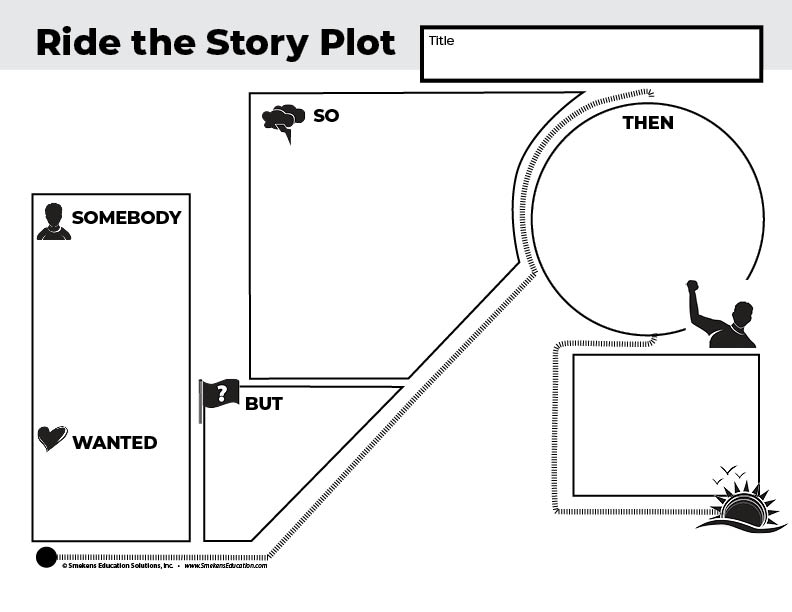 Regardless of the narrative genre, whether a picture book, short story, myth, legend, sci-fi, or animated video short, etc.— all narrative texts can be summarized using the same frame or structure: Somebody… wanted… but… so… then… (This will be referred to in the rest of the article as SWBST.)
Regardless of the narrative genre, whether a picture book, short story, myth, legend, sci-fi, or animated video short, etc.— all narrative texts can be summarized using the same frame or structure: Somebody… wanted… but… so… then… (This will be referred to in the rest of the article as SWBST.)
These words are key because they each represent a particular story element that must be included in any story’s summary.
- Somebody is replaced by the name(s) of the main character(s).
- Wanted is followed by that character’s motivation or what he desires.
- But introduces the conflict.
- So outlines the events that worsen the problem through rising action.
- Then reveals how the problem is ultimately solved/resolved.
Summaries are succinct and only include the most important information. The SWBST framework simplifies the process of determining which details to include—or exclude—to summarize stories.
In addition, this tool mirrors the plot map of all narrative texts. Utilizing it ensures that a student’s summary will follow the same story arc—and that’s essential. Any objective summary should always pattern the text structure used in the original text. (NOTE: This frame only works for narrative texts that include a plot.)
Simple summaries of short texts
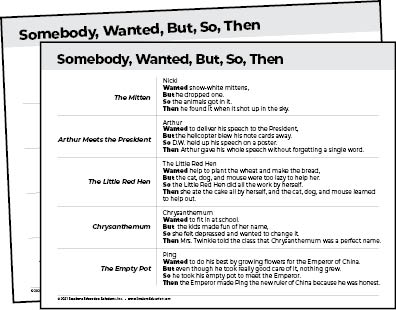 When teaching this concept over the course of several days, return to short texts previously read. First model how to recall the relevant details per story element. Then, model how to insert them into the Somebody, Wanted, But, So, Then frame to create a 1-3 sentence oral summary.
When teaching this concept over the course of several days, return to short texts previously read. First model how to recall the relevant details per story element. Then, model how to insert them into the Somebody, Wanted, But, So, Then frame to create a 1-3 sentence oral summary.
For example, the well-known fairy tale Cinderella may be summarized like this:
S – Cinderella
W – Wanted to attend the King’s ball.
B – But Cinderella’s stepmother forced her to do chores to keep her from going.
S – So, her Fairy Godmother helped her do the chores and get her to the ball.
T – Then she met her Prince Charming.
ELEMENTARY TEACHERS: Jump to the end of the article for ways to gradually release this skill from whole-class instruction.
SECONDARY TEACHERS: Initially, teach students how to summarize stories with short narrative texts. Then, just as students advance to reading longer texts, provide additional instruction on how to write longer summaries using the same frame. SWBST works with narrative stories of any length—including chapter books and novels.
Sophisticated summaries of longer texts
Take note that a summary’s length is to be proportionate to the length of the original text. So, if a 30-sentence picture book is summarized into 2-3 sentences, then it makes sense that the summary of a 200-page novel would be longer. Again, this is the struggle point for most students—What additional information should they include?
Explain to students that the summary won’t necessarily add more character information. And since the conflict, climax, and resolution are all individual story events—they won’t change much either.
Where the summary can be extended is often found within the story’s rising action. The conflict and resolution are separated dramatically with many more obstacles, consequences, and suspense—all that worsen the problem.
For example, using Edgar Allen Poe’s “The Cask of Amontillado,” the frame may be completed like this:
S – Montresor
W – Wanted revenge on Fortunato for disrespecting his family’s name.
B – But he didn’t want anyone to ever know— except Fortunato himself.
S – So he devised a way to hide the body.
S – And so Montresor used Fortunato’s love of fine wines to lure him down to the vault of wine barrels (casks).
S – And so Montresor encouraged Fortunato to drink while they were walking in search of a particular wine barrel (the Amontillado).
S – And so Montresor suggested turning back knowing Fortunato’s ego would not allow it.
S – And so Montresor led Fortunato to the most remote end of the crypt and took advantage of his drunken state to chain him to the wall.
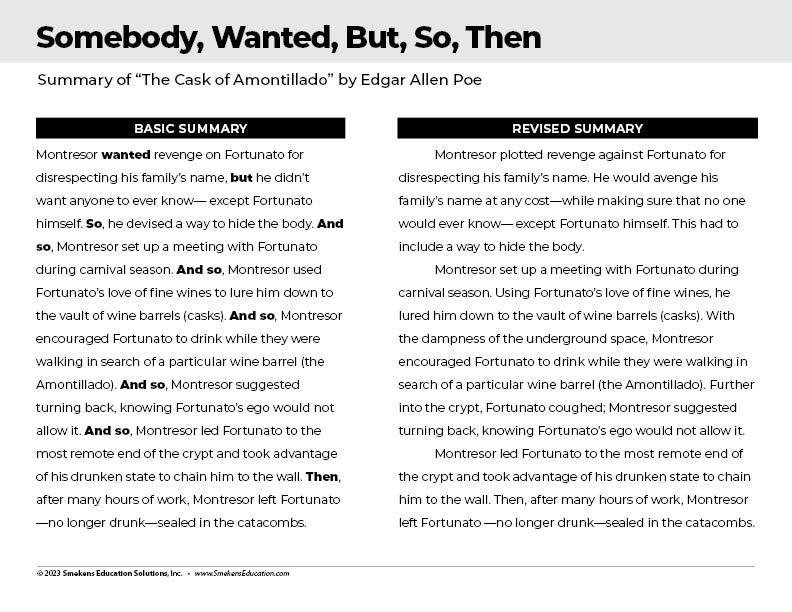 Although this frame helps older students prioritize and organize the many details of a longer text, emphasize that this is merely a starting point. We don’t really want students to use but, so, and so, then and other simplistic transition words in their summaries.
Although this frame helps older students prioritize and organize the many details of a longer text, emphasize that this is merely a starting point. We don’t really want students to use but, so, and so, then and other simplistic transition words in their summaries.
Therefore, deliver a lesson on how to revise the content generated by the frame. Teach them how to vary the sentence beginnings, adjust the sentence structures, and punctuate the different pieces of information. This will produce a strong and sophisticated narrative summary that takes SWBST to a whole new level.
Support in small groups
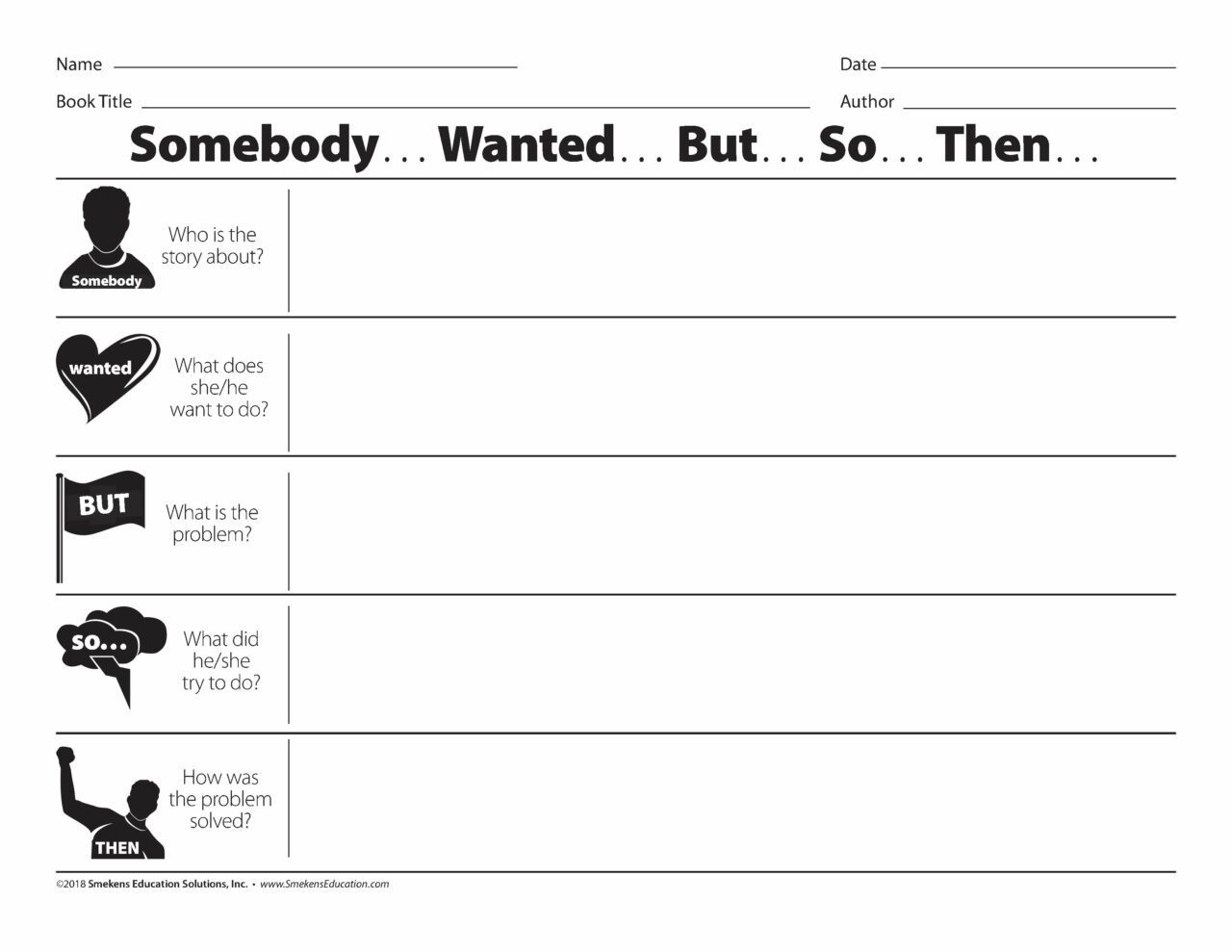
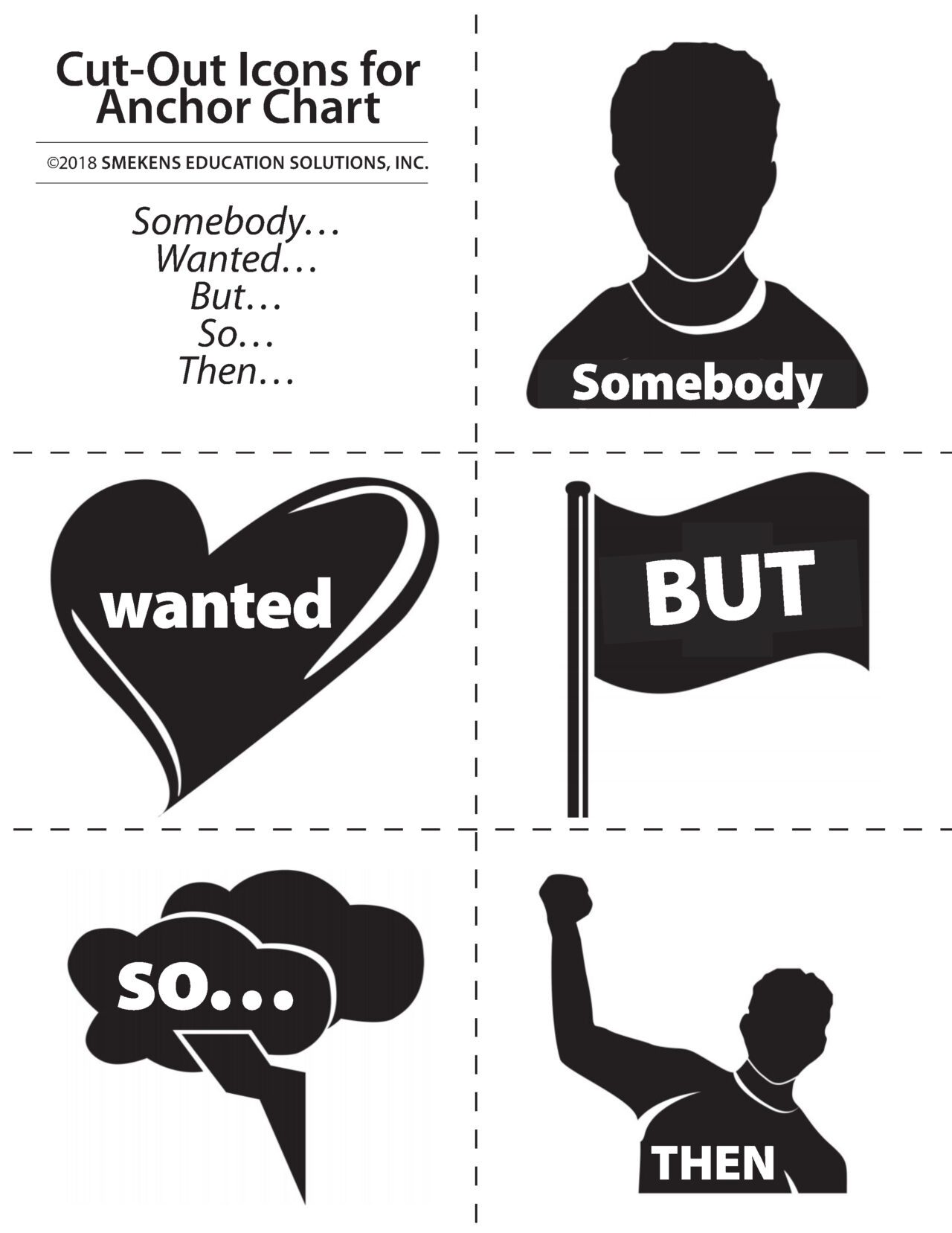 After several whole-class lessons, guide students to experiment with the skill within teacher-led small groups. Students read and work together to orally summarize the key supporting details. Hand each student one of the icons from the frame and conduct a shared summary.
After several whole-class lessons, guide students to experiment with the skill within teacher-led small groups. Students read and work together to orally summarize the key supporting details. Hand each student one of the icons from the frame and conduct a shared summary.
While students are orally summarizing their parts, the teacher scribes the writing onto an enlarged graphic organizer. This scribing activity teaches students how to incorporate key details within well-structured sentences of the frame.
Support in small groups
After several whole-class lessons, guide students to experiment with the skill within teacher-led small groups. Students read and work together to orally summarize the key supporting details. Hand each student one of the icons from the frame and conduct a shared summary.
Release to practice
After providing whole-class instruction on what is a story summary and lots of experiences in groups, gradually release students to practice summarizing stories in various literacy stations.
- Listening Station—Students listen to a text and orally summarize it using the pocket-chart cards.
- Fluency Station—Partners read and orally summarize a text using the pocket-chart cards or the Retelling Glove.
- Classroom Library—After reading, students individually summarize key details orally using the cards and/or in writing using the graphic organizer.
After several opportunities for independent practice, assess students’ summarization skills. Provide them with a grade-appropriate text to independently read and summarize—in one sitting.

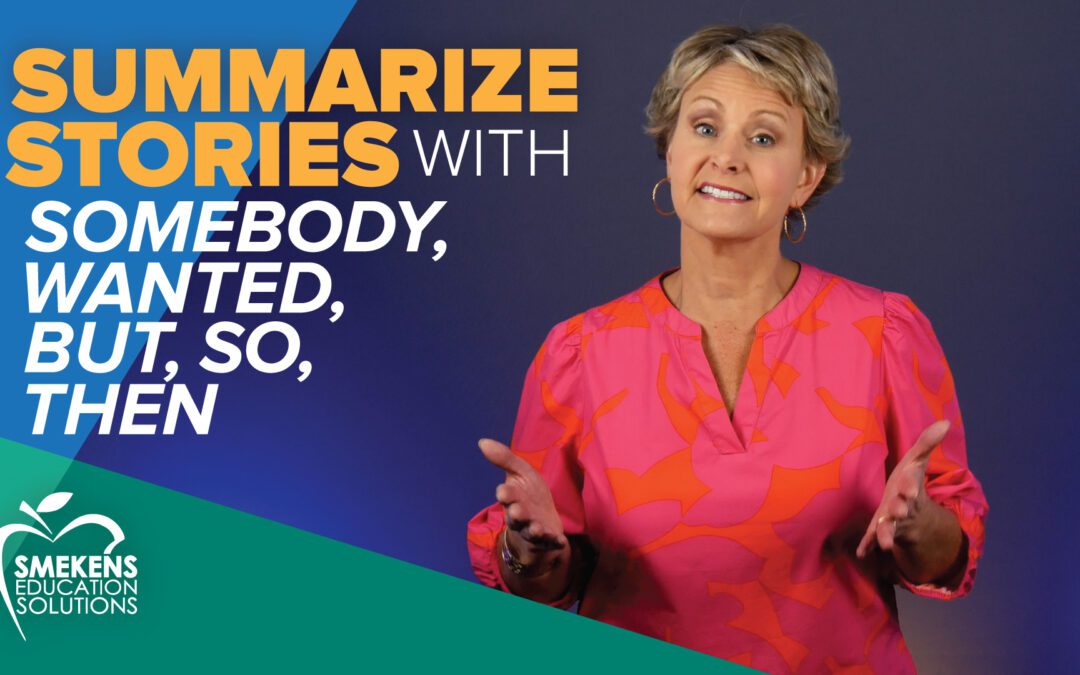


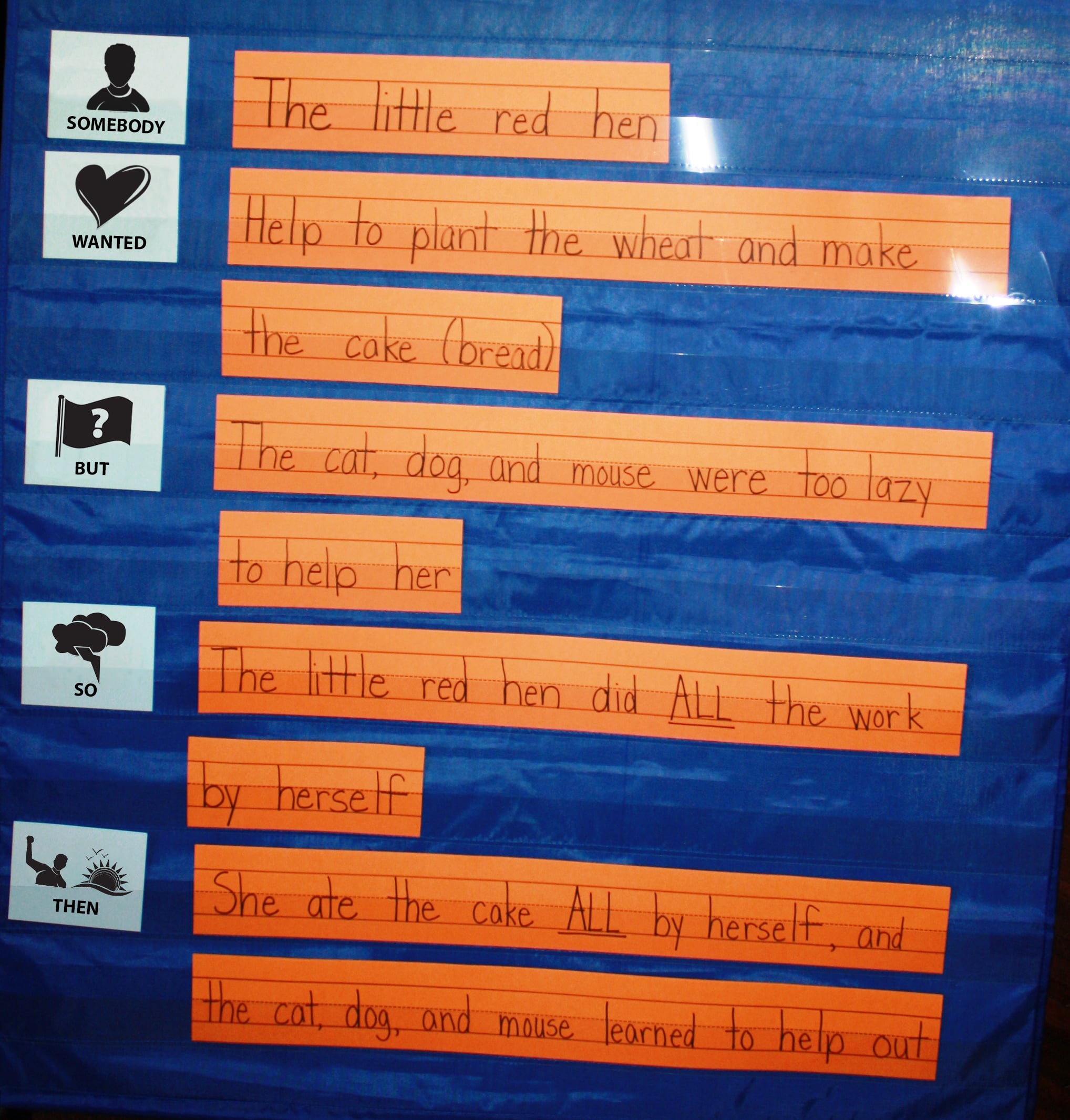



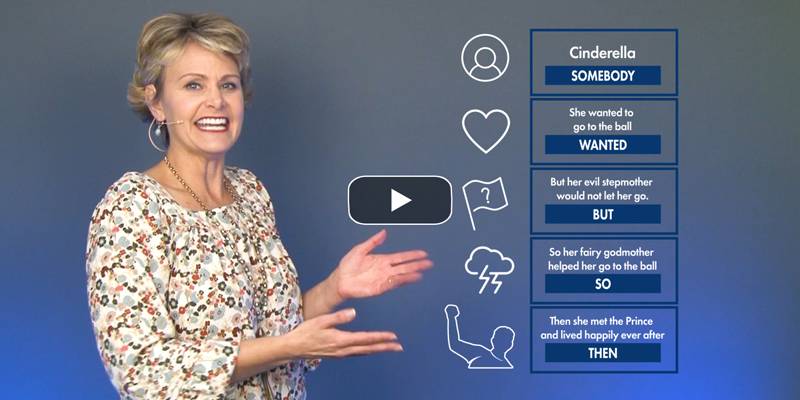
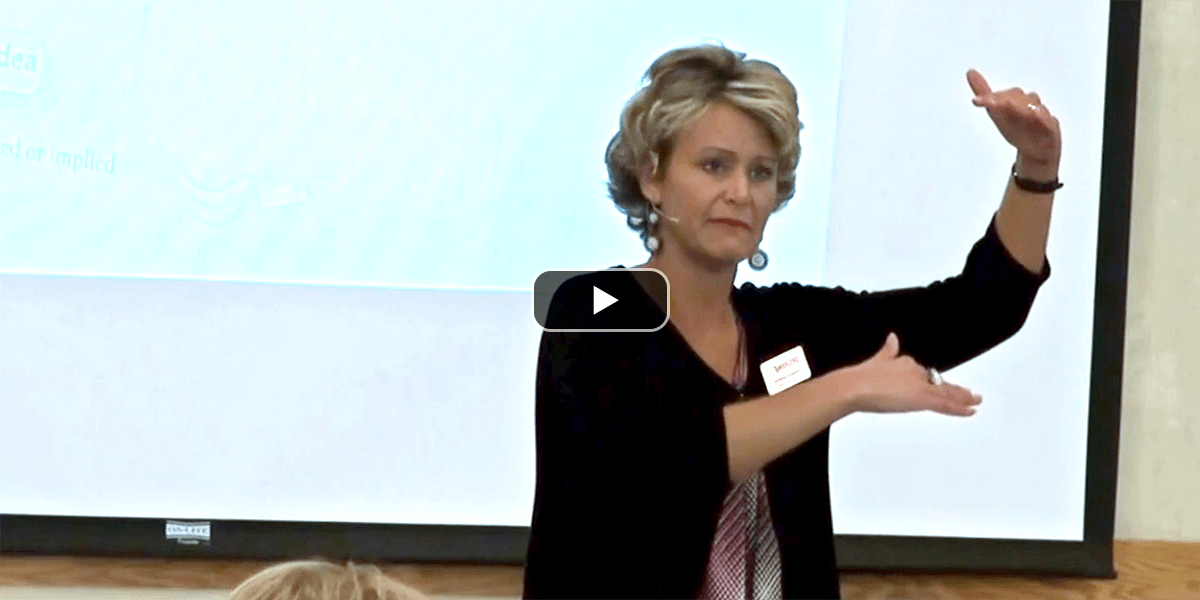
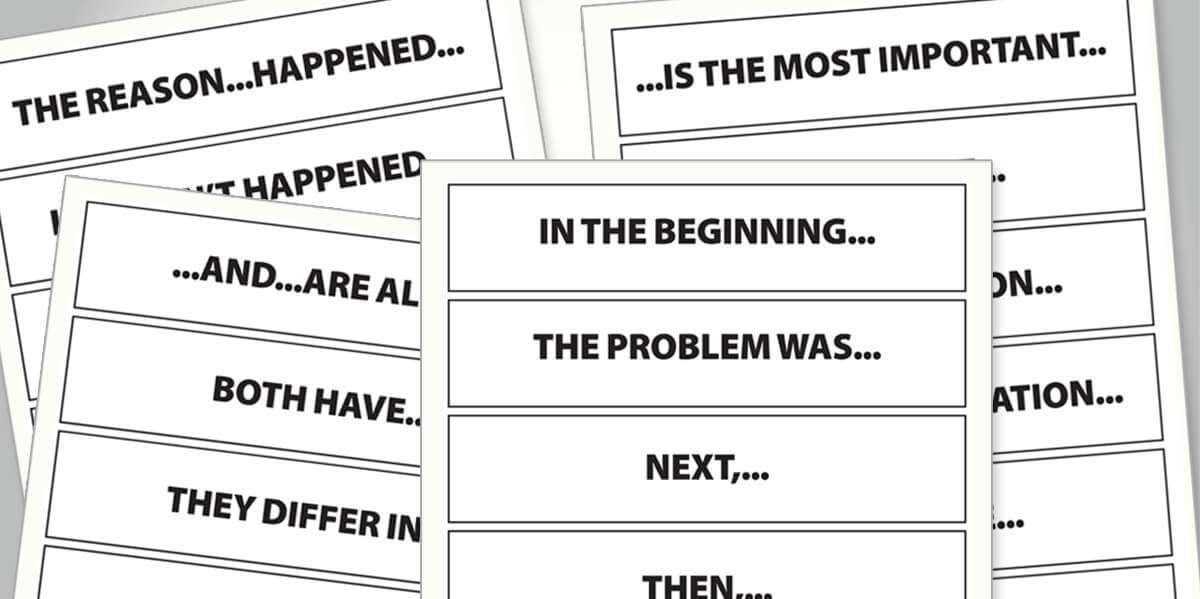
Thank you so much! I love this!
Amazing! Thank you!
Thanks for your kind words!
This article provides a clear framework and practical teaching suggestions to help students better understand and summarize stories. Thank you to the author for sharing such valuable resources, and I look forward to seeing more similar teaching tips! Also, I recommend everyone to visit my website YouTube Summarizer, where you can find more tools and tips on how to quickly summarize video content.